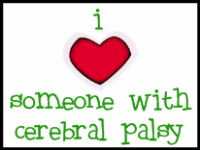Welcome to Friday Facts! here on the Knowledge Safari blog. Each week we aim to shine the spotlight on various segments of special needs in order to raise awareness and provide information. Today we focus on Growth Hormone Deficiency.
This information is taken from and more information can be found at MedlinePlus
Growth hormone deficiency - children
Growth hormone deficiency refers to abnormally short height in childhood due to the lack of growth hormone.
Causes
Growth hormone
Growth hormone is produced in the pituitary gland, which is located at the base of the brain.
Different hormones made in the brain tell the pituitary gland how much growth hormone is needed.
Growth hormone enters the blood and stimulates the liver to produce a hormone called insulin-like growth factor (IGF-1), which plays a key role in childhood growth.
Abnormally short height in childhood (called short stature) may occur if not enough growth hormone is produced.
Most of the time, no single clear cause of growth hormone deficiency is found.
Growth hormone deficiency may be present at birth (congenital)
It may also develop after birth, as the result of a brain injury, tumor, or medical condition
Children with physical defects of the face and skull, such as cleft lip or cleft palatecleft lip or cleft palate, are more likely to have decreased growth hormone levels.
Growth hormone deficiency is usually not passed from parent to child.
Although it is uncommon, growth hormone deficiency may also be diagnosed in adults. Possible causes include:
Brain radiation treatments for cancer
Hormonal problems involving the pituitary gland or hypothalamus
Severe head injury
Symptoms
Children with growth hormone deficiency have a slow or flat rate of growth, usually less than 2 inches per year. The slow growth may not appear until a child is 2 or 3 years old.
The child will be much shorter than most or all children of the same age and gender.
Children with growth hormone deficiency still have normal body proportions, as well as normal intelligence. However, their face often appears younger than children of the same age. They may also have a chubby body build.
In older children, puberty may come late or may not come at all.
Exams and Tests
A growth chart is used to compare a child's current height, and how fast he or she is growing, to other children of the same age and gender.
A physical examination including weight, height, and body proportions will show signs of slowed growth rate. The child will not follow the normal growth curves.
Several blood tests are used to help diagnose growth hormone deficiency and its causes:
GNRH-arginine test
Growth hormone levels in the bloodGrowth hormone levels in the blood
Growth hormone stimulation testGrowth hormone stimulation test
Insulin tolerance test (ITT, often used to diagnose adults)
Tests to measure levels of other hormones made by the pituitary gland
Imaging or x-ray tests may include the following:
Dual energy x-ray absorptiometry (DEXADEXA) scans can also determine bone age.
Hand x-rayHand x-ray (usually the left hand) can determine bone age. Normally, the size and shape of bones change as a person grows. These changes can be seen on an x-ray and usually follow a pattern as a child grows older.
Measuring growth hormone and binding protein levels (IGF-I and IGFBP-3) will show whether the growth problem is caused by a problem with the pituitary gland.
MRI of the head can show the hypothalamus and pituitary glands.
Treatment
A child's short stature will often affect self-esteem. Providing emotional support is an important part of treatment. Children may be teased by classmates and playmates. Family, friends, and teachers should emphasize the child's other skills and strengths.
Treatment involves growth hormone injections given at home. Patients may receive growth hormone several times a week or once a day.
Many children gain 4 or more inches over the first year, and 3 or more inches during the next 2 years. Then the growth rate slowly decreases.
Serious side effects of growth hormone therapy are rare. The most common side effects are:
Fluid retention
Muscle and joint aches
Outlook (Prognosis)
The earlier the condition is treated, the better the chance that a child will grow to be a near-normal adult height.
Growth hormone replacement therapy does not work for all children.
Hello Again
3 weeks ago































No comments:
Post a Comment